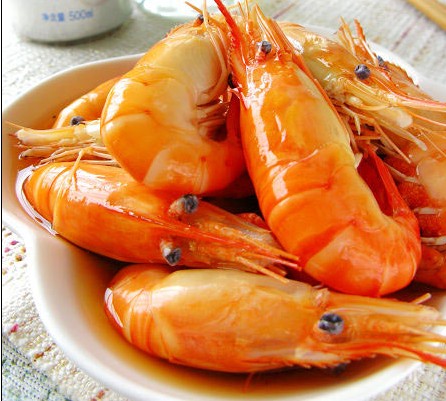The secret of fresh water shrimp culture technology
Green shrimp is the largest freshwater shrimp in China, which has delicate meat, delicious taste and rich nutrition, and is favored by people because of its medicinal value. Let me introduce to you the culture technology of delicious freshwater shrimp.

First, the habit of raising shrimp. Green prawns live widely in lakes and ditches and rivers, and most like to live in shallow waters with many aquatic plants. They are omnivorous animals, larvae are mainly plankton, and adult shrimp feed mainly on decaying stems and leaves of aquatic plants. Prawns usually mate and lay eggs from July to September, spawning 800 to 1200 eggs each time. As the fertilized eggs are well protected by the mother, the natural hatching rate is more than 92%. After peeling for 3 or 4 times, the larva becomes young shrimp. It takes only 2 to 3 months for young shrimp to mature and lay eggs. The fecundity of green shrimp is strong, and the female shrimp can ovulate again soon after ovulation and hatching.
Second, the culture of green shrimp. There are two methods for shrimp culture: one is to directly breed green shrimp, with 500 million female shrimp per mu and 300 million male shrimp per mu, which should be released at the end of April and early May. The second is to release artificially cultivated young shrimp: first, use a pond of about one mu as a breeding pond. before the Beginning of Summer, capture 10-12.5kg of parent shrimp with eggs from other rivers, from which individuals with strong and large number of eggs are put into the pond, and put water grass or poplar roots in the pond. During the period of labor, a small bucket of soybean milk (about 1 kg of soybeans) is fed every morning, followed by a bucket of vegetable cake or sugar lees (about 5 kg of dry products). Twenty days after hatching, 250 young prawns can be bred. When raising green shrimp artificially, the yield per mu can reach 15-25 kg, and the high yield can reach 40-50 kg.
Third, bait supply. The feeding habits of green shrimp are mixed in artificial feeding, all kinds of artificial feed can be fed, such as snail, silkworm pupa, fly maggot, fish meal and so on. Plant feed includes bean cake, rice bran, wheat bran distiller's grains and so on. Bait at 5 pm is appropriate, can be evenly scattered around the shrimp pond, the appropriate quantity, so as not to kill each other because of hunger.
Fourth, artificial culture ponds. Shrimp ponds should be built for artificial breeding of green shrimp. Shrimp ponds can be used in general fish ponds, an area of 2 mu, water depth of 1.2 to 1.5 meters, flat sand bottom silt should not be too much. Shrimp ponds should be close to water sources to facilitate drainage and irrigation. The swimming ability of green shrimp is poor, so some submerged plants such as shrimp algae should be propagated in shrimp ponds for shrimp habitat, but the area should not exceed 25% of the water area, and tree branches can also be put into the shrimp to prevent the loss of shrimp seedlings. Before stocking, tea meal, Croton, bleach, fish rattan essence or other drugs are usually used to kill harmful fish and large aquatic insects in the pond to avoid enemy encroachment. shrimp ponds should strengthen the usual pond patrol management to prevent the collapse and leakage of pond ridges or the predation of water birds and water rats. Once a large number of young shrimp are found jumping, swimming on the water surface, or climbing on the edge of the pond, it means that the dissolved oxygen of Lu in the pond is on the low side, and the metabolite is too high, which will cause a large number of prawns to die, so it is necessary to change water and increase oxygen immediately.
- Prev

How to improve the efficiency of raising chickens, it is the key to get rid of five misunderstandings.
How to improve the efficiency of raising chickens, it is the key to get rid of five misunderstandings.
- Next

How to prevent lard from deteriorating
Refined lard, stored for a long time, often has an unpleasant smell due to careless storage, mainly due to the oxidation and rancidity of oil due to the effects of light, heat, water and microorganisms. This kind of lard not only smells bad, but it will also be poisoned when eaten for a long time. The following are several methods to prevent lard from deteriorating: 1. Try to boil the oil as old as possible, and remove the oil residue before it can be stored. two。 The oil discharge container should be clean, preferably stored in a dark jar or dark glass bottle, sealed and placed at a dark low temperature.
Related
- On the eggshell is a badge full of pride. British Poultry Egg Market and Consumer observation
- British study: 72% of Britons are willing to buy native eggs raised by insects
- Guidelines for friendly egg production revised the increase of space in chicken sheds can not be forced to change feathers and lay eggs.
- Risk of delay in customs clearance Australia suspends lobster exports to China
- Pig semen-the Vector of virus Transmission (4)
- Pig semen-the Vector of virus Transmission (3)
- Five common causes of difficult control of classical swine fever in clinic and their countermeasures
- Foot-and-mouth disease is the most effective way to prevent it!
- PED is the number one killer of piglets and has to be guarded against in autumn and winter.
- What is "yellow fat pig"? Have you ever heard the pig collector talk about "yellow fat pig"?

